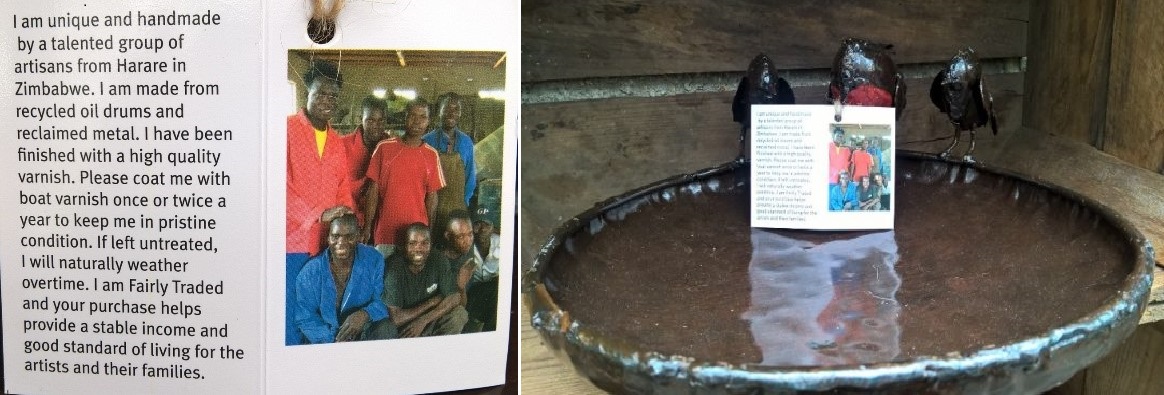-
Small Grants and Big News (Weekly blog, 6 August 2017)
Posted on August 7, 2017A blog by Catherine Leonard, Secretary-General

Old fashioned comms, at Knole (photo by Dora Hsu)
Small Grants Programme
Two things this week. Firstly, Monday was the deadline for applications to the Small Grants Programme. These are now being reviewed by the panel. I only took a quick glance but it looks like a tough competition this time with some really strong proposals. Good luck to one and all!
We also finalised our Small Grants Programme survey and distributed to INTO members. If you missed it and would like to contribute, you can do so via this link (by 18 August please!).
We want to try and understand whether the Small Grants Programme is working for you – and what if anything we can do to improve it. There will be a workshop in Bali where those present will have the opportunity to discuss the programme and other ways INTO can support its members.
Big news
Secondly, on Tuesday I was thrilled to receive the latest newsletters from the Zimbabwe National Trust and Heritage New Zealand. I get updates from many INTO members, some by email some by post, which I really enjoy (keep ‘em coming!). However, these two stood out this week. Partly because they came on the same day. But also because, although so hugely different in organisational character, there was a lot of common ground.
From Zealand to Zim

Heritage New Zealand’s latest magazine
Heritage New Zealand is one of the big guns. Like many ‘traditional’ National Trusts, Heritage New Zealand cares for heritage properties (48 across the country). It has a membership programme with around 20,000 subscribers who in return enjoy free entry to the properties, a 10% discount in the shops and a quarterly magazine. And it relies on the goodwill and ongoing financial and volunteer support of the wider community.
On the other hand, it also maintains the New Zealand Heritage List; regulates the modification of archaeological sites; manages the national heritage preservation incentive fund and provides advice to property owners.
To us here in London if feels more like English Heritage, before the creation of Historic England, if that means anything as an analogy. Two interesting and differing approaches. English Heritage was divided into two parts in 2015: Historic England, which inherited the statutory and protection functions of the old organisation, and the new English Heritage Trust, a charity that would operate the historic properties. Around the same time, the New Zealand Historic Places Trust changed its name to Heritage New Zealand in 2014 and came in closer to government by becoming a Crown agency. What we might call a quango. It receives 80% of its funding from the state.
National Trust of Zimbabwe
The National Trust of Zimbabwe also looks after properties of cultural heritage and natural beauty for the benefit of the people of Zimbabwe but at a rather different scale. Run almost entirely by volunteer committees, the NTZ is funded through rents, annual subscriptions, donations and bequests, admission charges to its seven properties, hire charges for the use of halls and grounds, and the proceeds of sales of nursery plants and cut flowers.
What struck me was that these two organisations, although 7,700 miles apart and operating in very different circumstances, clearly share a passion for preserving heritage as a legacy for future generations and the newsletters celebrate their successes – big and small – with their members and supporters. And there are some exciting projects ahead.

Fair Trade garden items made in Zimbabwe from recycled oil drums and sold in the Stourhead shop
‘People stories’
But it is the people stories which come through so strongly. Both newsletters bid farewell to old friends, heavily involved in the heritage movement in their respective countries, Mr Darrel Plowes and Dr Cliff Whiting ONZ. We hear directly from people on the ground ‘doing’ the conservation work. Digging is another theme – rescuing artefacts exposed by erosion along the Bush footpaths at Mubukuwene and turning the sod to begin work on returning the Timeball Tower to Lyttleton after the recent earthquakes. And shopping … !
I particularly liked Lin Goncalves’ report on visiting Stourhead (free under the reciprocal visiting scheme). Her delight at finding crafts from Zimbabwe in the shop and the obvious inspiration she derived from the estate. This is what being part of INTO is all about!
Congratulations to the dedicated volunteer team in Zimbabwe for all you manage to achieve amid challenging circumstances. (And many thanks for the shout out to INTO in your newsletter!) And hats off to Heritage New Zealand for their continued excellence.
Thanks for reading!

 44 (0)20 7824 7157
44 (0)20 7824 7157